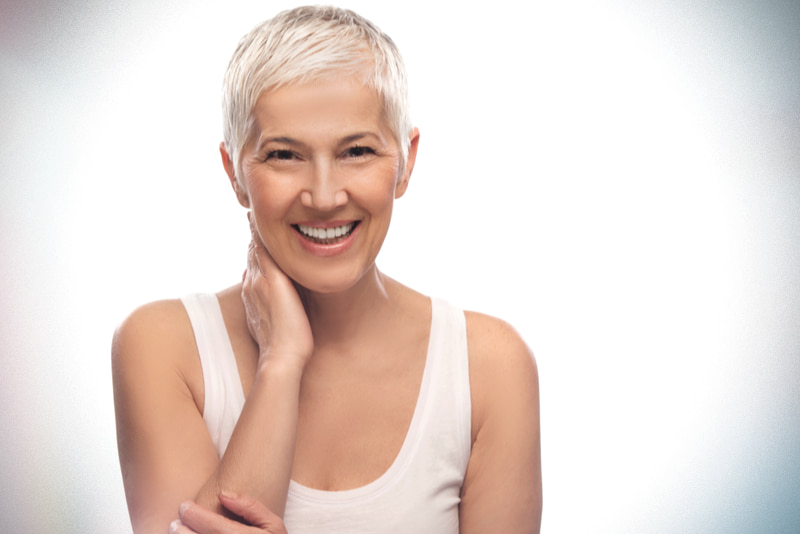
Physiological Factors in Facial Aging
When deciding on treatment for facial correction, there are many things that need to be taken into consideration. For example, genetics can play a vital role in how your face changes over time. How your parents age can offer a realistic view of how your own facial features may change. Additionally, loss of collagen is inevitable and collagen production declines at approximate 1% per year beginning in early adulthood.1 At beyond |Aesthetics, we offer a variety of non-surgical treatments that can address visible signs of facial aging.
Environmental and Lifestyle Factors in Facial Aging
Other factors that affect facial structure and that influence carcinogenesis and skin aging are environmental such as sun exposure, air pollution, and nutrition, while lifestyle factors can include alcohol consumption, smoking, and stress.
At beyond|Aesthetics, we look at a range of factors—including physiological, environmental and lifestyle—to help to determine the most appropriate treatment for your individual needs. Overall, it is important to note that assessing the full face for cosmetic deficits may reveal that the treatment of multiple areas is needed to achieve the desired results.
What Happens As We Age?
As we age, in addition to the loss of collagen and elasticity, our bone regenerating cells decrease around age 35 and continue to decrease throughout our lives. This is important to our facial appearance because bone volume provides structure to our facial anatomy. This bone loss can result in flattened cheeks, deeper temporal hollows, widening of the eye sockets and depressed tear troughs, and a less defined chin.
We also see a decrease in volume of fat pads which help to provide volume contributing to fullness and facial contouring. Also starting around age 35, both the superficial and deep fat pads begin to thin out and descend. This can result in the appearance of lip lines around the mouth and loss of pout, as well as more prominent nasolabial lines, and increased submental fullness under the chin.
The combination of bone and fat loss results in loose facial skin due to decreased firmness and suppleness and creates the appearance of a sagging jawline and jowls while repetitive muscle movement contributes to the formation of dynamic and static wrinkles.
Treating Facial Aging with Dermal Fillers
Cheek, Jawline, & Chin Augmentation
To best mimic natural bone structure, JUVÉDERM Voluma XC is a great choice. Voluma is an injectable gel made of short chains and long chains of hyaluronic acid (HA) and allows for tight and efficient cross linking. The gel has great firmness to it and therefore can hold its form well over time, lasting up to two years. This makes it ideal for the deep injections required for cheek, jawline, and chin augmentation.
Nasolabial Folds & Facial Creases
Using the same Vycross technology, JUVÉDERM Vollure XC is slightly less firm than Voluma and can be used for mid to deep dermis injections to fill in severe wrinkles or folds such as nasolabial folds. Another enduring dermal filler, Vollure XC can last up to 18 months.
Lip Enhancement & Tear Trough
Volbella XC also uses Vycross and can be used to add subtle volume to enhance the lips and soften the appearance of lines around the mouth. Results can last up to 1 year. This filler may also be used to correct hollows in the delicate undereye area.
Fine Lines & Wrinkles
JUVÉDERM Ultra and Ultra Plus use a Hylacross technology which only consists of long chains of HA. They are the most hydrophilic of the JUVÉDERM fillers which means they are attracted to and absorb water. These products can produce great results for a plumper lip or correction of facial wrinkles and folds.
Learn More About How to Combat Facial Aging
Many factors affect how facial structure changes as we age. It is important to understand that these factors collectively contribute to your appearance and treating more than one area may be necessary to balance facial features and produce a more youthful look.
Bone loss, diminished fat pads and the downward descent of facial tissues, as well as the wrinkles and lines caused by repetitive muscle movement can be treated with dermal fillers. Schedule a consultation today for a personal assessment by one of our expert injection providers to determine which filler is the appropriate choice to reach your cosmetic goals.

